Explore this post with:
Maintaining a clean bathtub is about more than just aesthetics. It’s about ensuring a sanitary, safe, and relaxing environment in your bathroom. Whether you use your tub for daily showers or the occasional bath, it will accumulate grime, soap scum, mildew, and hard water stains over time. Regular cleaning can help prevent these issues, extend the lifespan of your tub, and make every bath or shower feel fresh and rejuvenating.
In this comprehensive guide, we’ll walk you through a detailed step-by-step process on how to clean a bathtub based on its material and other specific factors that affect the cleaning approach. By the end, you’ll have a spotless tub that sparkles, plus tips on how to maintain it for the long term.
- Why It’s Important to Keep a Bathtub Clean
- Materials You Need for Cleaning a Bathtub
- Preparation You Must Do Before Cleaning the Bathtub
- How to Clean Porcelain or Ceramic Bathtubs
- How to Clean Acrylic Bathtubs
- How to Clean Fiberglass Bathtubs
- Additional Tips for Cleaning Tough Stains
- How to Maintain a Clean Bathtub
Why It’s Important to Keep a Bathtub Clean
A dirty bathtub isn’t just unsightly; it can also harbor bacteria, mold, mildew, and other pathogens that could potentially affect your health. If left unchecked, grime can harden into tough stains, making cleaning much more difficult over time. Soap scum buildup can dull the surface, making the bathtub feel less inviting. Beyond hygiene, cleaning your tub regularly helps maintain the integrity of the material, reducing wear and tear, and extending its lifespan.
For families with children or individuals with sensitive skin, a clean tub is especially crucial. Many people use harsh chemical products in the bathroom, but over time, these can leave a film or residue. Regular cleaning with the right techniques ensures that harmful substances don’t linger.
The good news is that with a little consistency, cleaning your bathtub can be a relatively simple and straightforward task. By establishing a weekly or bi-weekly routine, you’ll keep your tub looking and feeling fresh, avoid unsightly buildup, and minimize the effort needed in the long run.
Materials You Need for Cleaning a Bathtub
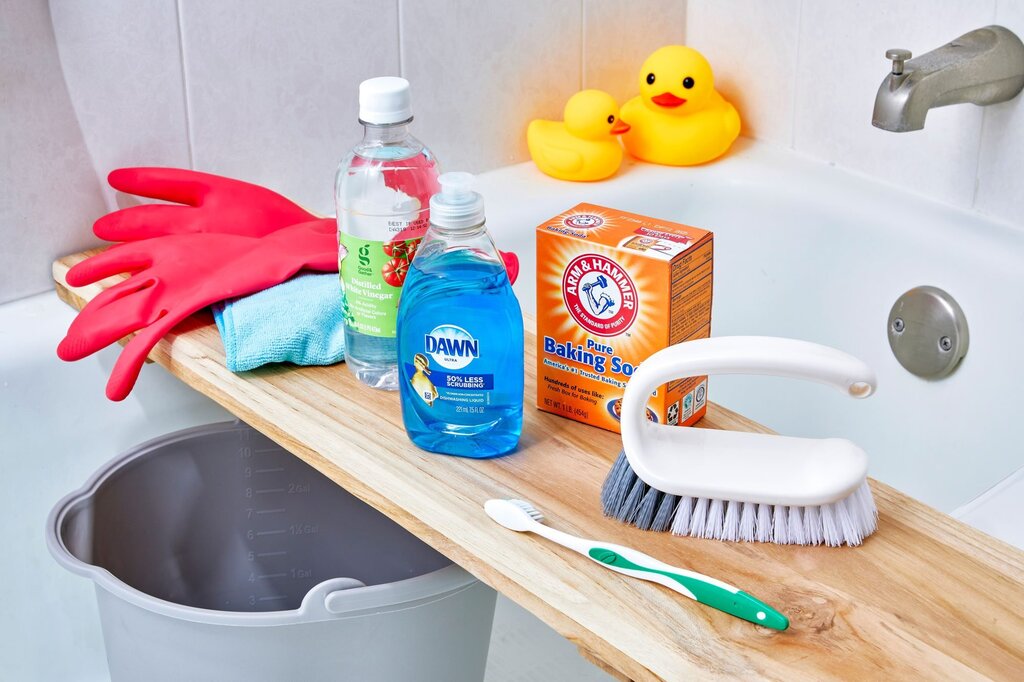
Having the right supplies on hand can make all the difference in getting your bathtub clean efficiently and without damaging its surface. Different materials respond differently to cleaning methods, so always make sure you know what kind of tub you have before you begin. Below is a list of essential cleaning tools and products:
1. Scrub Brush or Sponge
This will be your primary cleaning tool. Choose a soft-bristled brush or a non-abrasive sponge for general bathroom cleaning. If you have a particularly tough stain, you may need a stiffer brush, but be careful on delicate surfaces like fiberglass and acrylic, as abrasive tools can cause scratches. A scrub brush with a long handle can also make it easier to reach corners without straining.
2. Baking Soda
It is Known for its mild abrasiveness and natural deodorizing properties, baking soda is ideal for cleaning a variety of surfaces. It effectively tackles soap scum, grime, and minor stains without scratching your tub.
3. White Vinegar
White vinegar is a powerful, natural cleaning agent that works wonders on soap scum and hard water stains. It’s also great for disinfecting, so it’s a good choice for regular cleaning to keep mildew and bacteria at bay.
4. Dish Soap
Mild dish soap is a versatile cleaner that works well for everyday upkeep. It’s gentle on most surfaces and helps break down oils and soap residue.
5. Bleach (for Tough Stains)
Bleach is a strong disinfectant and stain remover. While it’s not necessary for regular cleaning, it can be useful for getting rid of tough stains or mold. Be careful when using bleach, as it can damage some materials and is harsh on the skin and lungs if inhaled directly. Always dilute bleach with water and ventilate the bathroom while cleaning.
6. Gloves
Always wear gloves when cleaning, especially when using strong chemicals like bleach or vinegar. They protect your hands from irritation and from the drying effects of harsh cleaners.
7. Optional Supplies
Depending on the type of stains you are dealing with, you might also need:
- Lemon juice: This works well for rust stains.
- Specialized tub cleaners: Products made for specific materials like fiberglass or acrylic can be effective without causing damage.
- Microfiber cloth: Ideal for drying and polishing the surface after cleaning to prevent streaks or water spots.
By gathering these items ahead of time, you’ll make the cleaning process faster and more efficient.
Preparation You Must Do Before Cleaning the Bathtub
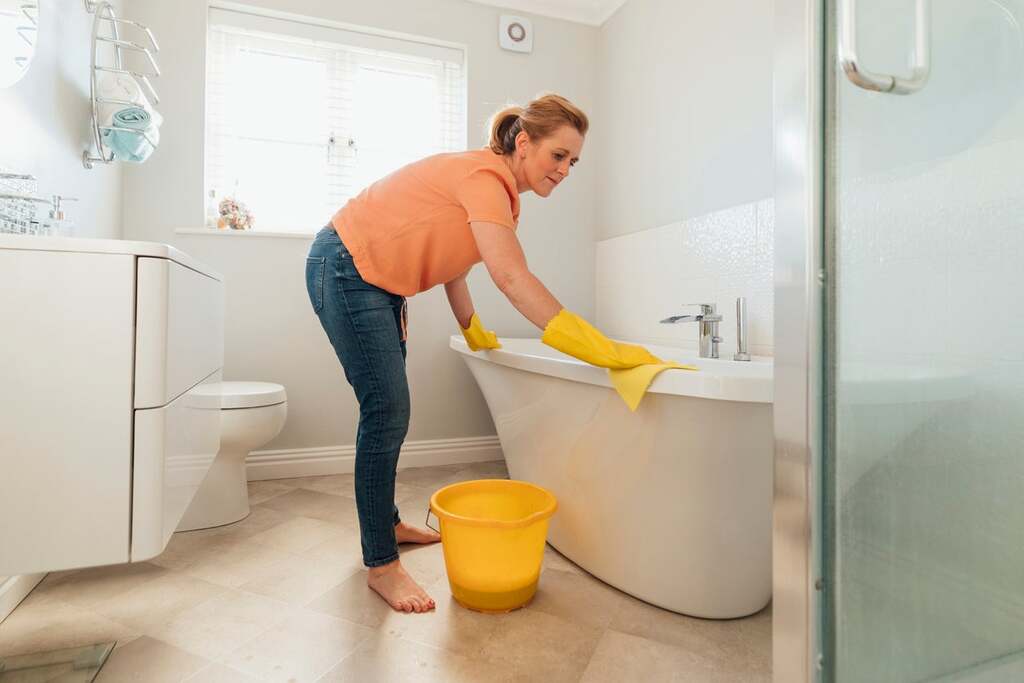
Preparation is the first step in ensuring that your bathtub gets properly cleaned. Taking a few simple actions before you start scrubbing can make a big difference in the results. Here’s how to prep your tub for cleaning:
1. Remove All Items from the Tub
Start by clearing out everything that might be cluttering the tub. This includes shampoo bottles, soap bars, sponges, loofahs, and bath toys. If you have any non-slip mats or shower caddies inside the tub, remove those as well. Clearing out these items gives you better access to the entire surface and ensures that your cleaning solution can work without obstructions.
2. Rinse the Tub
Next, give the tub a quick rinse with warm water. This helps to remove any loose debris, hair, or dust that might have settled inside the tub. It also softens any buildup of soap scum or grime, making it easier to scrub off later.
Once the tub is prepped and clear of items and debris, you can move on to the cleaning process.
How to Clean Porcelain or Ceramic Bathtubs

Porcelain and ceramic are some of the most common materials used for bathtubs, especially in older homes. These surfaces are relatively durable but can become stained or discolored if not cleaned regularly.
1. Create a Cleaning Solution
Porcelain and ceramic can handle slightly abrasive materials, so you can use baking soda as your base. Mix a paste by combining 1/4 cup of baking soda with a few tablespoons of dish soap. You can also add a little water or vinegar to help dissolve the soap scum and stains more effectively.
2. Apply the Paste
Take your sponge or soft brush and dip it into the paste. Apply the paste to the tub, focusing on areas that have soap scum, hard water stains, or other grime buildup. Be sure to cover the entire tub, including the sides and bottom.
3. Let It Sit
Allow the paste to sit on tough stains for 10 to 15 minutes. This gives the baking soda and soap time to break down any grime.
4. Scrub the Surface
After letting the paste sit, scrub the tub in circular motions, applying gentle but firm pressure. Pay special attention to the drain area, the corners of the tub, and areas near the faucets, which tend to collect the most grime.
5. Rinse the Tub Thoroughly
Once you’ve scrubbed the tub, rinse it thoroughly with warm water. Make sure you remove all of the paste residue to prevent streaks or leftover grime.
6. Dry the Tub
Use a microfiber cloth to dry the surface, ensuring that no water spots or streaks remain. This step is especially important if you have hard water, which can leave mineral deposits if allowed to air dry.
Porcelain and ceramic tubs are fairly low-maintenance, but regular cleaning is still important to keep them looking their best. If you notice any persistent stains, you can use a specialized porcelain cleaner for a deeper clean.
How to Clean Acrylic Bathtubs
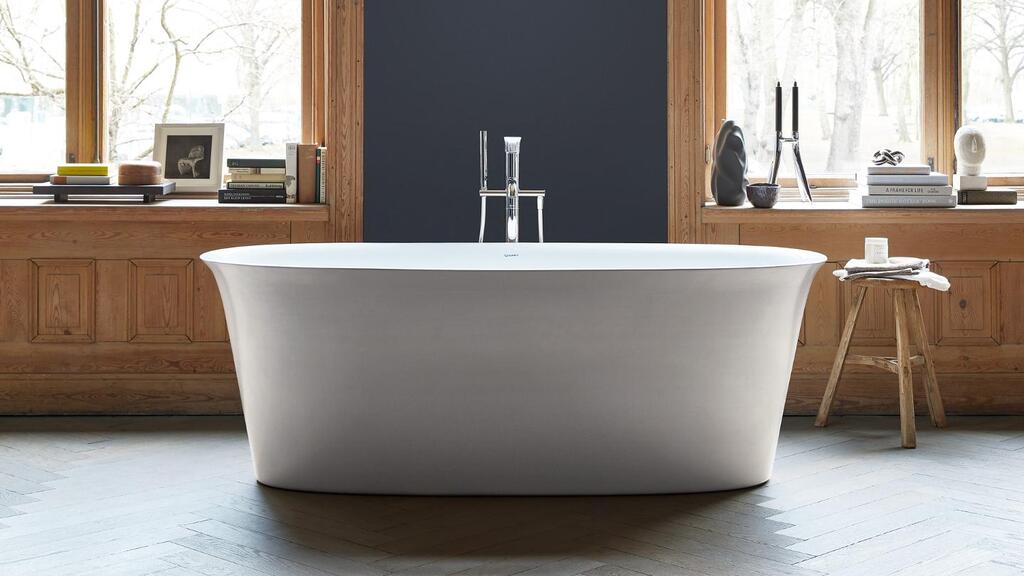
Acrylic bathtubs are popular for their smooth, shiny finish, but they are more prone to scratches than porcelain or ceramic. For this reason, it’s essential to use gentle cleaning tools and mild cleaning solutions when cleaning an acrylic tub.
1. Choose a Mild Cleaner
Acrylic tubs require a gentle approach to cleaning. Dish soap mixed with warm water is a safe option, as it’s mild enough not to damage the acrylic surface but effective enough to remove dirt, soap scum, and body oils.
2. Apply the Cleaning Solution
Soak your soft sponge or cloth in the dish soap solution, and apply it to the tub. Be sure to avoid using abrasive scrubbers like steel wool or harsh brushes, as these can scratch the surface.
3. Gently Scrub the Tub
Scrub the surface of the tub, focusing on any areas where soap scum or grime has accumulated. Be gentle as you work, applying only enough pressure to remove the dirt without damaging the surface. If you encounter stubborn stains, apply a bit more cleaning solution and let it sit for 10 minutes before scrubbing again.
4. Rinse the Tub
Rinse thoroughly with warm water to remove all of the soap residue. Make sure to clean around the edges of the tub and the faucets, where residue can build up.
5. Dry the Tub
Use a microfiber cloth to dry the tub to prevent streaks and water spots. This also helps maintain the tub’s glossy appearance.
Acrylic tubs are prone to scratches, so regular cleaning with a soft touch will help keep them looking new. Avoid using harsh chemicals or abrasive tools that can damage the finish.
How to Clean Fiberglass Bathtubs
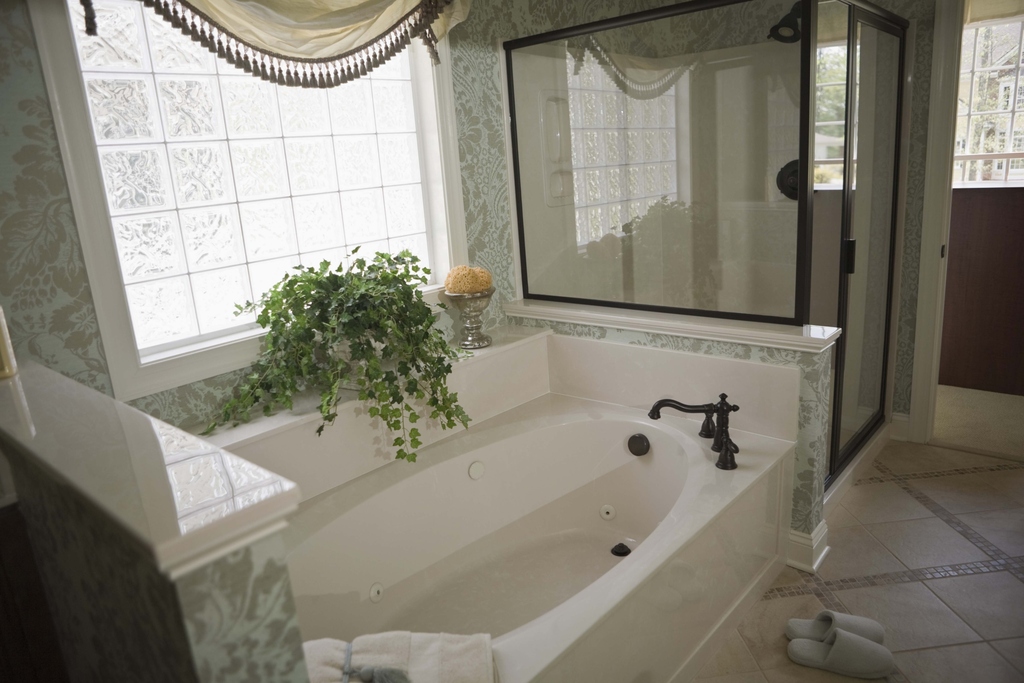
Fiberglass tubs are lightweight and affordable, but they can be more delicate compared to porcelain and acrylic. They are prone to dulling or becoming scratched if cleaned with the wrong products. Follow these steps to clean your fiberglass tub effectively:
1. Use a Mild Cleaner
A dish soap and warm water solution works well for fiberglass tubs. Alternatively, you can use a specialized fiberglass cleaner that’s formulated to protect the tub’s finish while cleaning it.
2. Avoid Abrasive Scrubbers
Similar to acrylic tubs, fibreglass is prone to scratching. Use a soft sponge or cloth to apply your cleaning solution, and steer clear of abrasive brushes or scouring pads.
3. Gently Scrub the Tub
Apply your cleaning solution to the tub and gently scrub any areas with visible soap scum or dirt buildup. Don’t use too much pressure, as this could damage the surface.
4. Rinse Thoroughly
Rinse the entire tub with warm water, making sure to remove all traces of the cleaning solution.
5. Dry with a Soft Cloth
Dry the tub using a microfiber cloth to avoid streaks and water spots. This step also helps maintain the shine and prevents dulling.
Fiberglass tubs can dull over time, but with gentle cleaning and proper care, you can keep them looking shiny and new.
Additional Tips for Cleaning Tough Stains
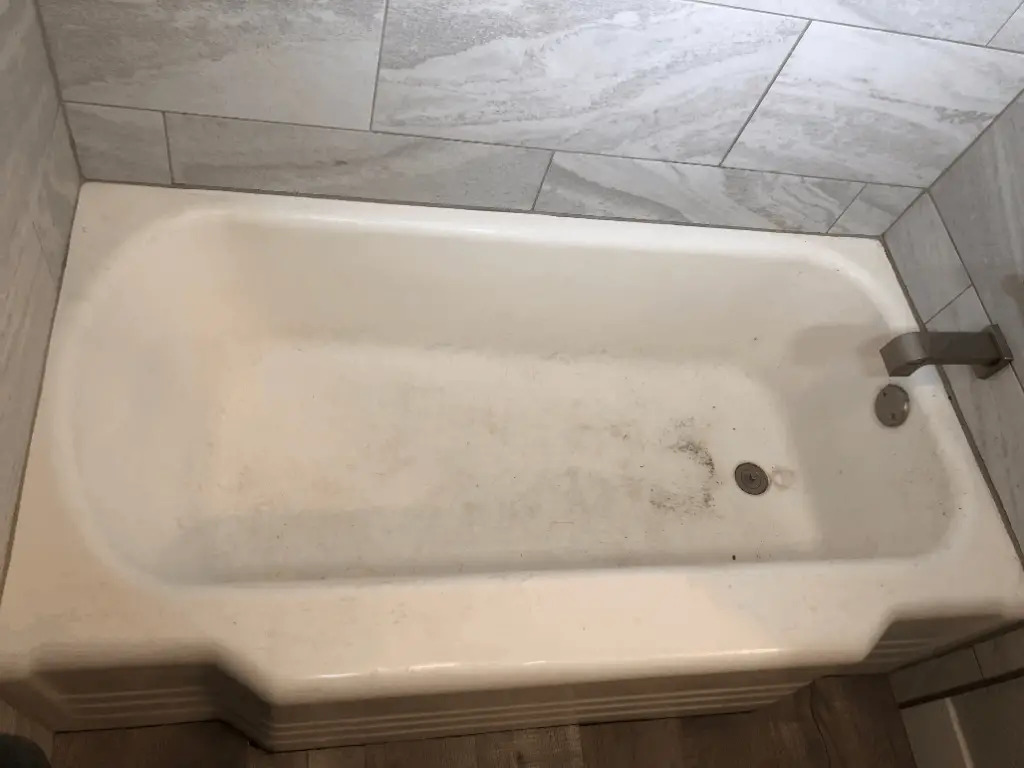
Even with regular cleaning, there will be times when your bathtub develops stubborn stains that require extra attention. Here are some tips for dealing with specific issues:
Soap Scum Buildup
Soap scum can form a tough film on the surface of the tub. To remove it, use white vinegar, which is highly effective at breaking down soap scum. Spray vinegar directly on the affected areas, let it sit for 15 minutes, and then scrub with a sponge or cloth. You can also add a bit of baking soda to create a foaming action, which helps lift away the soap scum.
Hard Water Stains
Hard water stains are caused by mineral deposits left behind by the water. These stains can appear as white, chalky streaks, or spots. A mixture of baking soda and vinegar can help dissolve these deposits. Apply the mixture to the stained area and let it sit for 15 to 20 minutes before scrubbing.
If the stains are particularly stubborn, consider using a commercial cleaner designed for hard water deposits. Just be sure to read the label to ensure it’s safe for your tub’s material.
Rust Stains
Rust stains can be caused by old or corroded pipes or water with a high iron content. Lemon juice and salt can be effective for removing rust stains. Sprinkle salt on the rust stains, then apply lemon juice on top. Allow the mixture to sit for 30 minutes before scrubbing the area with a soft sponge.
For more severe rust stains, a commercial rust remover can be used, but make sure it’s safe for your tub’s surface.
Mold and Mildew
Mold and mildew can form in areas of the tub that remain damp, particularly around the caulking or in the corners. To remove mold, mix one part bleach with ten parts water and apply it to the affected areas. Let it sit for 10 to 15 minutes, then scrub with a brush. Be sure to ventilate the bathroom while using bleach, and rinse the tub thoroughly afterward.
If you prefer a natural solution, white vinegar can also kill mold. Spray it on the moldy areas and let it sit for 30 minutes before scrubbing.
How to Maintain a Clean Bathtub

Once you’ve done a deep clean, maintaining a clean bathtub becomes much easier with regular upkeep. Here are some tips to help you keep your tub spotless:
Rinse After Every Use: Rinsing your tub with warm water after each use helps prevent soap scum and grime from building up.
Wipe Down Weekly: Using a soft cloth or sponge, wipe down the tub once a week to remove any dirt or residue that may have accumulated.
Use a Daily Shower Cleaner Spray: Spraying your tub with a daily shower cleaner can help prevent soap scum and mildew from forming.
Address Stains Promptly: The sooner you deal with minor stains, the easier they are to remove. Don’t let grime or stains sit for too long.
By following these maintenance tips, your bathtub will stay clean and inviting, making future deep cleaning sessions far less intensive.
Conclusion
Cleaning a bathtub doesn’t have to be a time-consuming or difficult task. By using the right materials and cleaning techniques, you can keep your tub in excellent condition, whether it’s made of porcelain, acrylic, or fiberglass. A regular cleaning routine will not only maintain the appearance of your tub but also prevent the buildup of grime, soap scum, and mold. With consistent upkeep, your bathtub will remain a relaxing and enjoyable space for years to come.
In Case You Missed It!
About the Author: Nishant Desai
Nishant Desai has over 8+ years of experience in SEO and blogging. His blogging expertise can organically increase online visibility and traffic for blogs and websites. With his SEO expertise, he has already contributed to iGeeksblog, Firstsportz, and Firstcuriosity. In addition, he can create content strategies, conduct keyword research, publish optimized blogs, and resolve technical issues.




